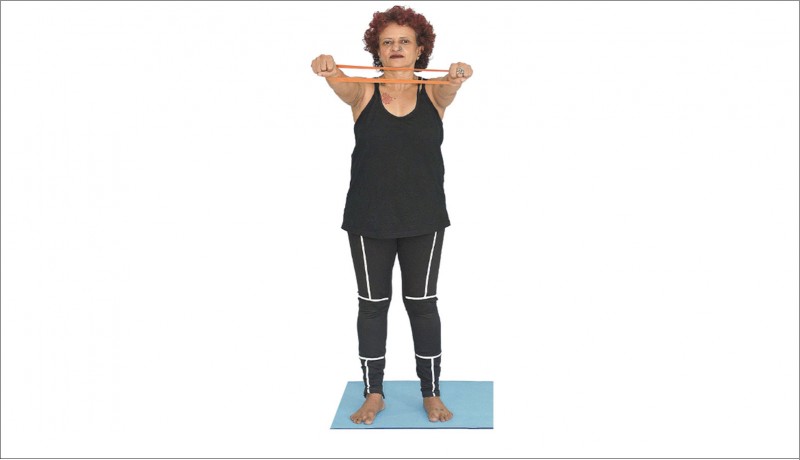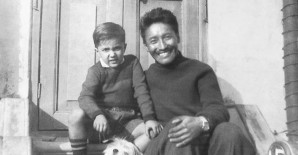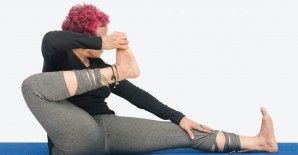
Columns

‘TheraBands’ incorporate resistance training in your yoga practice
The stretch band is an interesting prop, and easy to find. These come with different tensile strengths: easy, medium, heavy and very heavy. If you are a beginner to this type of resistance training, you should always start with the lightest resistance, or the ‘easy’ band. Each company has different colour charts to these four levels, so choose smartly. After a few weeks, you will find that your body has gotten used to the easy level and you can progress to the ‘medium’. For most of us, this level is sufficient to challenge ourselves. Only very hardcore trainers should go to the other levels—and ideally under guidance. These bands work well with many arm and shoulder poses in yoga, as well as with leg stretches.
Though easy to use, it is important to know how to use these resistance bands. While using such bands (also called TheraBands), you must try to pass the challenge to the muscles and not the joints. This is essential. So, you must take a few weeks to get the structure of the pose right before venturing into more advanced poses. There are two types of TheraBands; one is long and open-ended; the other is shorter, a loop. The longer one is more versatile and used in the manner of a yoga belt. The shorter one has a limited range in yoga, but is more challenging.
Some of the yoga poses you can use this band with are the leg raise in its many variations (supta padangushtasana), shoulder exercises (skandasana/skandachakrasana) and even in the shoulder stand (sarvangasana), in which you can place it around the calves to create a deep stretch at the legs or hold it at the curve of the soles of your feet to create tension in the arms and legs. This is similar to holding a non-stretch yoga belt but with more impact. These bands are also good for working the upper back through stretches that are called executive stretches in common parlance and are clubbed in the palm tree (tadasana) series in yoga. For more advanced levels, you can source online tutorials on these flows; these are pretty safe if the instructor is giving clear instructions and you are using the easy level of the band. You can do the shoulder stretch (skandachakra) and expand on it by holding the band firmly at the chest and gently stretching it out to the right side—and repeating for the left.
YOGIC MOVES
Shoulder stretch (skandachakra)
This one is done with a short TheraBand loop. In case you have the longer version, knot it firmly to create a loop for similar impact. Stand straight in the palm tree pose (tadasana) with feet slightly apart. Pass the loop through both hands till it rests at the muscles of the forearm. Raise arms to shoulder level. Inhale, gentle move arms apart. Exhale, slowly release them back. Repeat a few times. Remember not to release too fast. If you do, your muscles will not get worked out much. Releasing slowly is more challenging. Make this the standard for any other band-related pose you do. Also remember not to bend your arms at the elbow. This means you have gone over your range and are likely to stress your joint. Ensure you have a focused practice. Benefits: This is used as rehab to build confidence and strength back in the arms, even after injuries. The muscles are superbly challenged. It is important to create this resistance and challenge in the muscles because bones closer to these muscles respond by becoming denser and fitter.
Shameem Akthar is a Mumbai-based yoga acharya. If you have any queries for her, mail us or email at contact.us@harmonyindia.org. (Please consult your physician before following the advice given here)
Photo: Haresh Patel Featured in Harmony — Celebrate Age Magazine November 2017
you may also like to read
-
Mental workout
Mukul Sharma tells you how to keep those grey cells ticking Everyone will ultimately lose his or her brain….
-
Helpline
Dr Harshbir Rana answers your queries on personal and social issues related to ageing, elder care and intergenerational relationships ….
-
Off the cuff
Raju Mukherji pays tribute to his first hero, Tenzing Norgay, an exemplary mountaineer Darjeeling, 1955. Dr ‘Pahari’ Guha Mazumdar….
-
Yoga RX
Shameem Akthar shows ways to control debilitating ankle pain through regular practice Ankle pain is so common and prevalent….







